Eco-Printing
 Here are some examples from the friend who showed us how to do this.
Here are some examples from the friend who showed us how to do this.
 We went out to the backyard to get started. There was a supervisor already on duty to make sure that we didn't mix up the buckets. One says Iron Sulphate and the other says Tannin.
We went out to the backyard to get started. There was a supervisor already on duty to make sure that we didn't mix up the buckets. One says Iron Sulphate and the other says Tannin.
 We dipped our fabric in one or the other depending on if it was silk or cotton and then laid it out on the table.
We dipped our fabric in one or the other depending on if it was silk or cotton and then laid it out on the table.
 I brought weeping willow fronds, oak and eucalyptus leaves, and zinnia and dahlia flowers. I started with silk dipped in tannin solution and then covered this with cotton soaked in the iron solution
I brought weeping willow fronds, oak and eucalyptus leaves, and zinnia and dahlia flowers. I started with silk dipped in tannin solution and then covered this with cotton soaked in the iron solution
 After rolling everything up and tying it snugly the fabric rolls were steamed for an hour and a half.
After rolling everything up and tying it snugly the fabric rolls were steamed for an hour and a half.
 While the first batch was steaming we all worked on another project. We were limited by the pot size to a 12" roll. To print a wider fabric it needed to be folded. So that's what I did with this one. This piece is 36" wide. I laid leaves on the center strip and folded one side over. The design would be symmetrical on those two panels. Then I spread plastic on that fabric and placed leaves on the plastic to be printed on the third layer to be folded over.
While the first batch was steaming we all worked on another project. We were limited by the pot size to a 12" roll. To print a wider fabric it needed to be folded. So that's what I did with this one. This piece is 36" wide. I laid leaves on the center strip and folded one side over. The design would be symmetrical on those two panels. Then I spread plastic on that fabric and placed leaves on the plastic to be printed on the third layer to be folded over.
 Here are the first ones being unveiled.
Here are the first ones being unveiled.
 The plant material leaves an outline as it resists the iron on the cotton layer that was applied to it. The iron turns the silk varying shades depending on the strength and freshness of the iron solution.
The plant material leaves an outline as it resists the iron on the cotton layer that was applied to it. The iron turns the silk varying shades depending on the strength and freshness of the iron solution.
 Interestingly the cotton "blanket" that was rolled up with the silk is sometimes just as appealing as the silk piece.
Interestingly the cotton "blanket" that was rolled up with the silk is sometimes just as appealing as the silk piece.
 This is a cotton pillowcase in which the design is not from a resist but from the plant material itself.
This is a cotton pillowcase in which the design is not from a resist but from the plant material itself.
 Here is the project that I did first. I like the printed cotton as much as I do the silk. The willow is the most striking feature. The color spots at the bottom and top are from the flower heads.
Here is the project that I did first. I like the printed cotton as much as I do the silk. The willow is the most striking feature. The color spots at the bottom and top are from the flower heads.The purple blotch at the base of the leaves on the right is a result of the amount of tannin in those leaves. It leaks out during this process. One way to deal with that is to put the stems to the edge of the fabric.
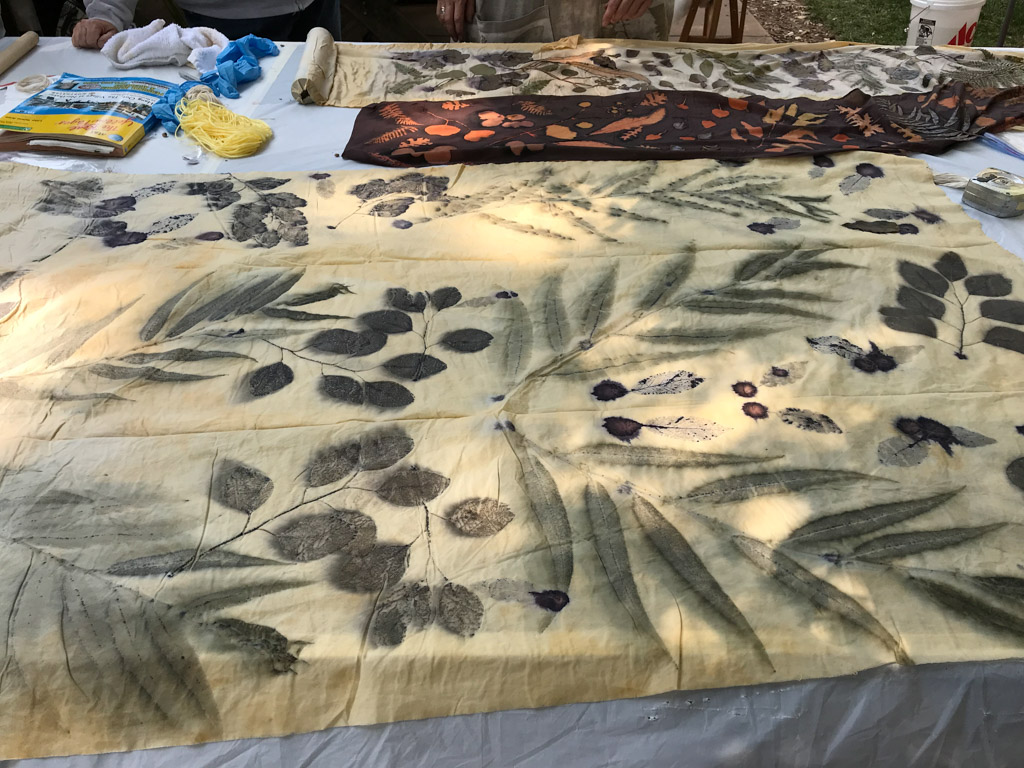 Here is the larger piece that I did.
Here is the larger piece that I did. 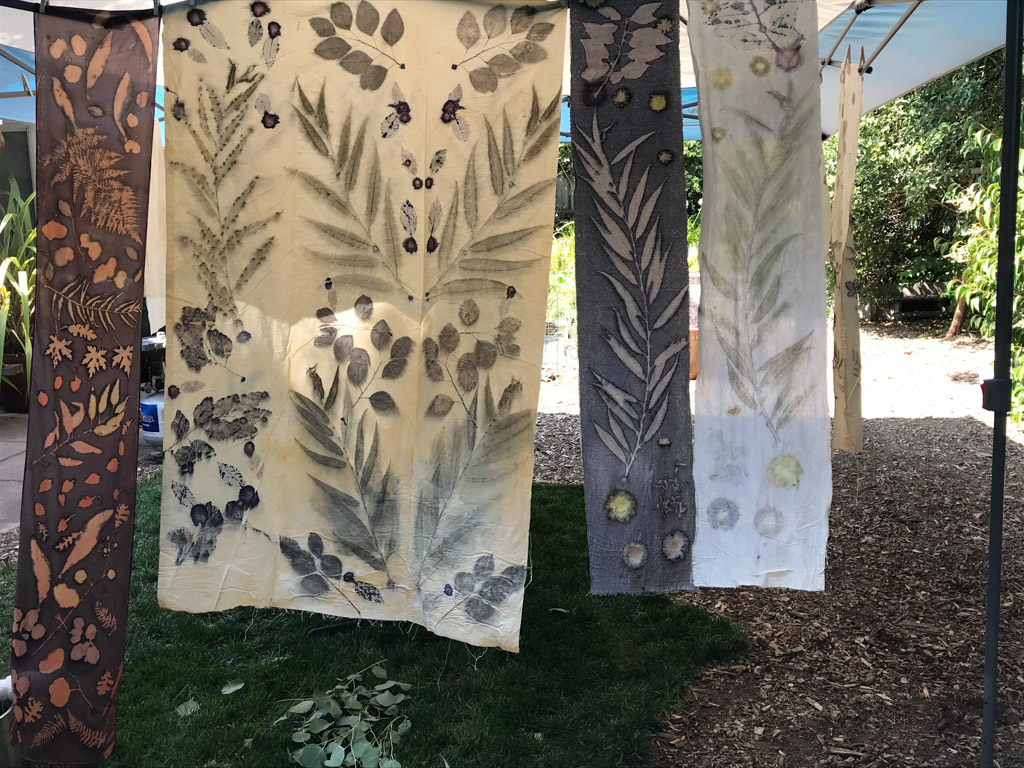 You can see the symmetry of the folded cloth on the right. The third layer has a different look. I think those splotchy parts has something to do with the plant material being rolled right onto the plastic. The tannin "leakage" from the oak leaves is also apparent on this piece.
You can see the symmetry of the folded cloth on the right. The third layer has a different look. I think those splotchy parts has something to do with the plant material being rolled right onto the plastic. The tannin "leakage" from the oak leaves is also apparent on this piece.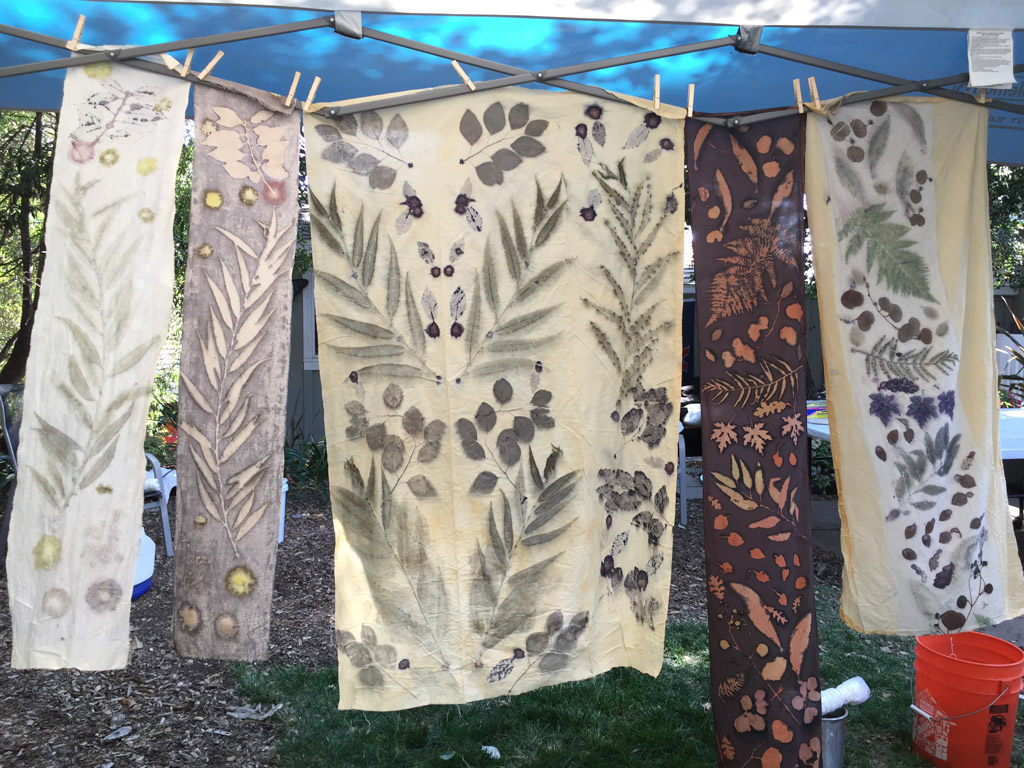 The pieces on the right were a silk scarf that started out a rusty red and the mirror image is the blanket cloth for that scarf. Both are beautiful.
The pieces on the right were a silk scarf that started out a rusty red and the mirror image is the blanket cloth for that scarf. Both are beautiful.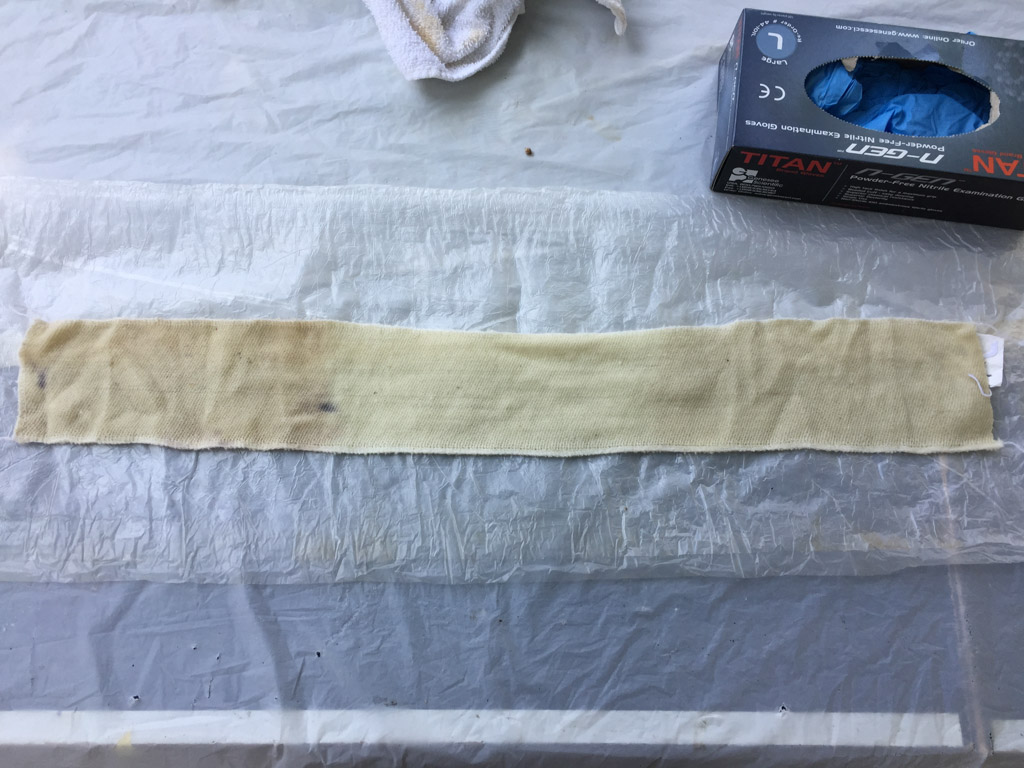 I went there planning to make some wool samples. However I had not mordanted my wool so I decided to save most of it. This piece was dipped in iron (left side) and tannin (right side) and the middle was not treated. I laid out black walnut leaves and did the steaming later at home.
I went there planning to make some wool samples. However I had not mordanted my wool so I decided to save most of it. This piece was dipped in iron (left side) and tannin (right side) and the middle was not treated. I laid out black walnut leaves and did the steaming later at home.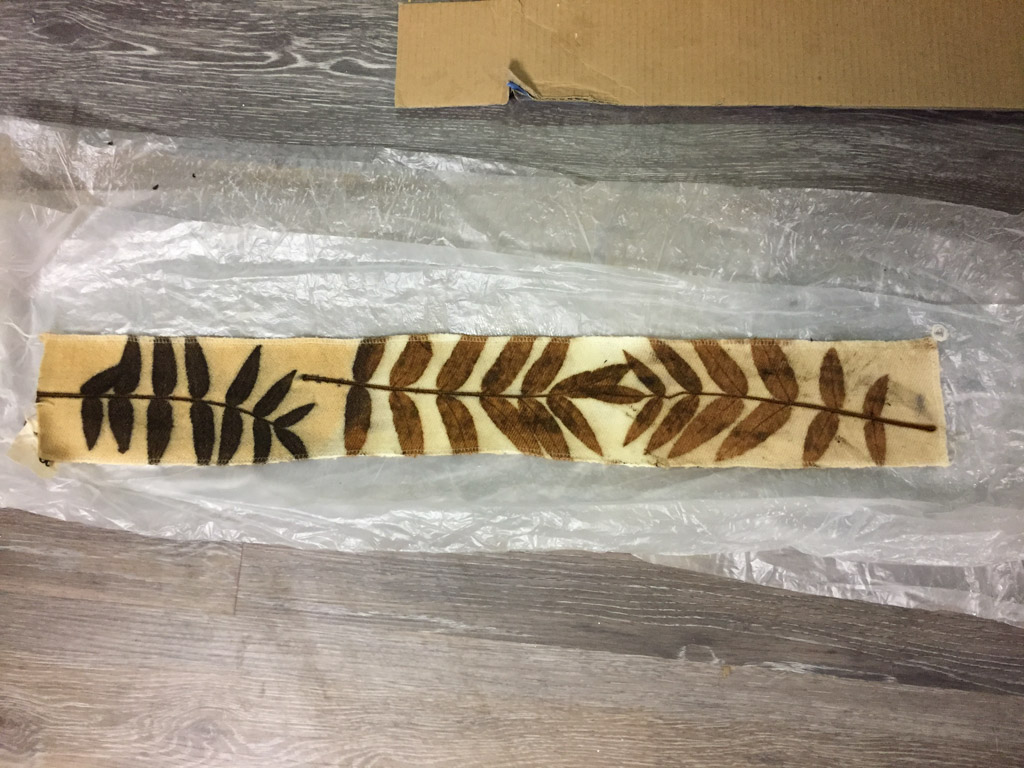 This is the finished sample. Next step will be to wash all of these and see how they hold up. I'm excited to do more of this for sure. ... Like I need another thing to distract me right now.
This is the finished sample. Next step will be to wash all of these and see how they hold up. I'm excited to do more of this for sure. ... Like I need another thing to distract me right now.